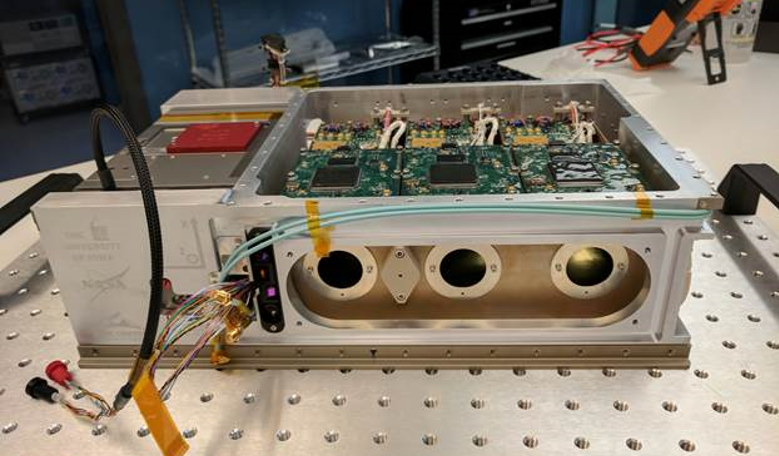Winging its way through space is a small box with a mammoth task ahead of itself. Weighing around 12 kilograms, the 10 x 20 x 30 centimetre CubeSat known as HaloSat is on a mission to find the missing mass in the Universe.
From data gathered on the cosmic microwave background (CMB), the oldest light in the universe that has been permeating space from around 400,000 after the big bang, scientists have calculated that ‘normal’ matter – protons, neutrons and other subatomic particles that make up all of the stuff we see all around us such as planets and galaxies – only equates to around 5 percent of matter in the Universe.
This is about half of what cosmologists say should be present. The rest of the Universe is made up dark matter (around 25 percent), an elusive material we have yet to conclusively identify and an even stranger substance known as dark energy. Dark energy refers to a theoretical negative pressure that is accelerating the expansion of the Universe, and it makes up the remaining 70 percent of the Universe.
“We should have all the matter today that we had back when the universe was 400,000 years old,” said Philip Kaaret, HaloSat’s principal investigator. HaloSat is a NASA CubeSat mission but led by the University of Iowa. “Where did it go? The answer to that question can help us learn how we got from the CMB’s uniform state to the large-scale structures we see today.”
So, where did it all go? Some researchers think that the missing matter may be in hot gas located either in the space between galaxies or in galactic halos; outlying regions surrounding individual galaxies.
Indeed the Milky Way has one and HaloSat will study X-rays that are fired off from hot oxygen atoms in the halo surrounding our galaxy. Temperatures in this region are expected to reach about 2 million degrees Celsius (3.6 million degrees Fahrenheit) and while other NASA telescopes such as Chandra can pick up these super hot photons, it can only do so in a small patch of sky at any one time.
HaloSat on the other hand will look at the whole sky, 100 square degrees at a time. This will help determine if the diffuse galactic halo is shaped more like a fried egg or a sphere, which in turn will help determine its mass. By knowing its mass, scientists can then understand if the Universe’s missing matter is in galactic halos or elsewhere.
“If you think of the galactic halo in the fried egg model, it will have a different distribution of brightness when you look straight up out of it from Earth than when you look at wider angles,” said Keith Jahoda, a HaloSat co-investigator and astrophysicist at NASA’s Goddard Space Flight Center in Greenbelt, Maryland. “If it’s in some quasi-spherical shape, compared to the dimensions of the galaxy, then you expect it to be more nearly the same brightness in all directions.”
Having been fired off the International Space Station (ISS) last week, HaloSat will now start gathering data for at least the next three years, to help solve the colossal conundrum of where is all of the missing matter.
“HaloSat has been a wonderful opportunity to get my hands on an instrument, work on the intricacies of something that’s going into space, and plan for all of the problems that go with that,” said Daniel LaRocca, a UI graduate student on the mission team.
Fellow undergraduate student Hannah Gulick is also keen to start seeing results from the plucky CubeSat. “HaloSat has definitely shaped how I see my future playing out. I hope to be an astrophysicist who builds instruments and then uses the observations from those instruments to make my own discoveries.”











